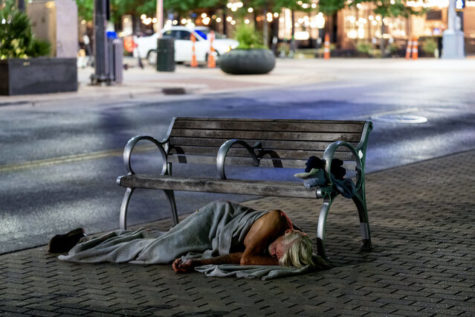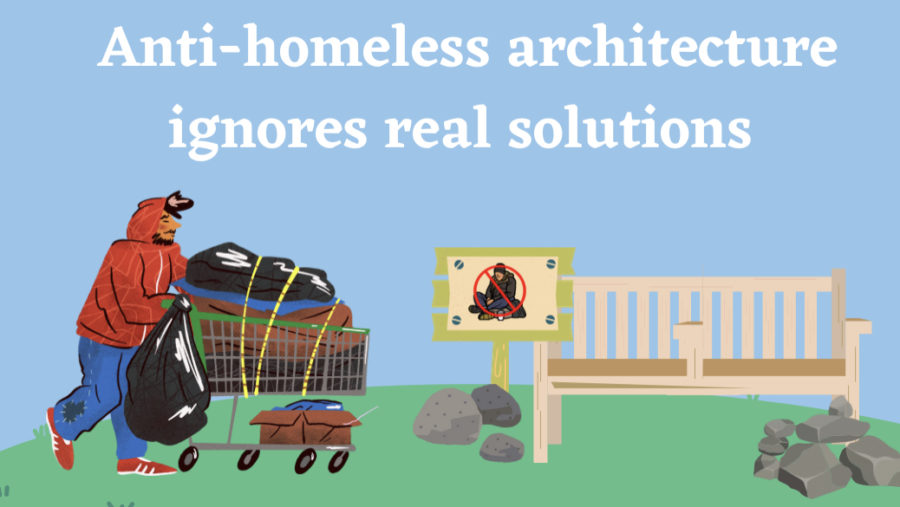Opinion: Anti-homeless architecture ignores real solutions
No matter how large or small the homeless population is in an area, how a city chooses to deal with the issue has always varied in response. Homelessness as a whole is on a decline; however, according to unitedwaydallas.org, those returning to the streets in 2022 have increased in number as an effect of COVID-19. The controversy with how to respond to this problem brings a variety of issues, one being the construction of anti-homeless architecture.
Anti-homeless architecture, also called hostile and defensive architecture, is a design a city implements in its daily structures, such as benches or sidewalks, to discourage and prevent certain actions, like sleeping. This type of architecture usually appears in urban cities such as New York and San Francisco, but has also been recently spotted in cities in Texas, most notably Austin, Dallas and Denton. Examples of this can be subtle, like slanted benches or benches with armrests in the middle of the seat; however, they can also be more extreme and noticeable, such as street spikes and rocks under bridges and highways.

Though many argue that this type of architecture is beneficial as it discourages solicitation and stops the homeless from “bothering others,” this “solution” ignores the fact that there is a large number of homeless people who don’t have any place to sleep but benches and under highways. This form of hostile design simply reinforces the perception that those who are struggling need to figure out their own ways to survive and stop “making the city look bad.”
Because of these negative mindsets within city officials, we tend to write off those on the streets as “unwilling” to improve their conditions. However, the conditions of the average shelter are often not quality enough to make that lifestyle change. These homeless shelters are usually inflexible, short on supplies and unstable. We tend to forget that these types of programs are understaffed and can’t accommodate the large numbers of people who need their help. Rather than relying on insufficiently funded shelters or hostile architecture, it would be more efficient for cities to invest in prevention programs, rehousing/street services and an effective crisis response system.
The solution to an increase in the homeless population is not to force them out of the public eye and ignore real methods of helping them. Instead, what we need to do is reform how we deal with the issue of homelessness. If our local cities responded to the homeless by investing in ways to help them rather than spending thousands of dollars on making them feel obsolete, not only would it help get those in need off the streets, but new methods would be implemented to aid the less fortunate and reduce the need — or want — for this discriminatory form of architecture in the future.

Senior Shehzil Imran is the feature editor and this is her third year on staff. In her free time, she enjoys watching horror movies, writing and doing...




Matthew • Nov 2, 2022 at 6:31 AM
very good article—this aspect of homelessness discrimination is most often overlooked or forgotten—we need to help our fellow humans through difficult times and not just sweep them under the rug.